ACARP Research Reports
Tyre and rim management is a complex problem, and EMESRT recognised that further problem definition work was required. Industry researchers were engaged to provide a better understanding of the human factors aspects of the tasks and environment.
This was the catalyst behind several rounds of research funding approved by the Australian Coal Industry’s Research Program (ACARP), a unique and highly successful mining research program that ACARP has been running in Australia since 1992.
The below ACARP funded projects are a direct result of the EMESRT tyre management improvement project.
C33005 - Human factors aspects of tyre handling equipment design and operation examined within an EMESRT control effectiveness framework approach
The primary objective of this project was to analyse the tyre handling operations, consider the equipment types, and align with the initiatives of the mining industry to reduce exposure to unwanted and adverse events through improved equipment and work design.
Over three phases, this project evaluated the human factors aspects of tyre handling equipment design and operation within an Earth Moving Equipment Safety Round Table (EMESRT) – Control Effectiveness Framework approach and provides functional performance requirements for this equipment. It illustrates a process by which human factors principles should be applied to equipment design and operation within the EMESRT Control Effectiveness Framework approach.
Phase 3 – July 2022
Phase 3 focussed on the refinement and conversion of high consequence tyre handling and maintenance tasks identified. Supporting collateral was developed, including a poster describing the direct and indirect tyre handling interactions, an operational warning poster, a revision to the tyre handling equipment type matrix, and problem-based design statements. Subject matter expertise was leveraged to help inform the content development. The identified tasks and storyboard creations were synthesised to determine implications to the (EMESRT) tyre handling Control Framework material. The project occurred alongside C33007 and used content captured by their EYECUETM computer vision technology site monitoring and artificial intelligence hazard detection systems to help inform the storyboards and explain tyre handling operations to the technical animation and learning instruction design teams.
Phase 2 – March 2022
Phase 2 involved further analysis of tyre handling operations, classification of equipment and fitment types, and identification of high consequence tasks. The findings from Phase 2 have led to preliminary consideration of event based storyboards, historic and imagined, per their Credible Failure Modes and current Business Inputs.
Phase 1 – April 2021
A human-factors investigation of mining tyre handling equipment was undertaken. The goal of site visits during this phase was to engage in an empirical evaluation of human factors aspects of tyre handling equipment and design. Through EMESRT group facilitation, a task-based analysis of equipment and system design was undertaken, considering human-interface, functional operating requirements, and the design implications to worker productivity and health. Implications for the EMESRT Control Effectiveness Framework approach was considered, as were design implications for the EYECUETM monitoring technology.
C35020 - Human centred hazard education in OTR tyre handling per the EMESRT control effectiveness framework
The nationally recognised competency requirements for tyre servicing do not adequately address the human factors required in handling off-the-road mining equipment tyres and rims. This project described a human factors approach to elicit knowledge from domain experts on tyre handling scenarios with fatal hazard exposures. Impact of the interactive, digital, scenario based educational modules on a group of field based tyre technicians was evaluated at two mine sites.
The project was undertaken in 2 stages, with outcomes described within each stage against the following objectives:
Stage 1 describes a human factors approach to elicit knowledge from domain based subject matter experts, to better understand the system of tyre handling, and to translate the known fatality hazards in educational modules that support training to tyre technicians or system designers in accessible ways.
Stage 2 describes human factors approaches to participate in and test the design of interactive, animated hazard education content on OTR tyre handling with field technicians. It also describes the exploration on the use of visual remote guidance head-mounted, hands-free technologies in OTR tyre handling applications.

